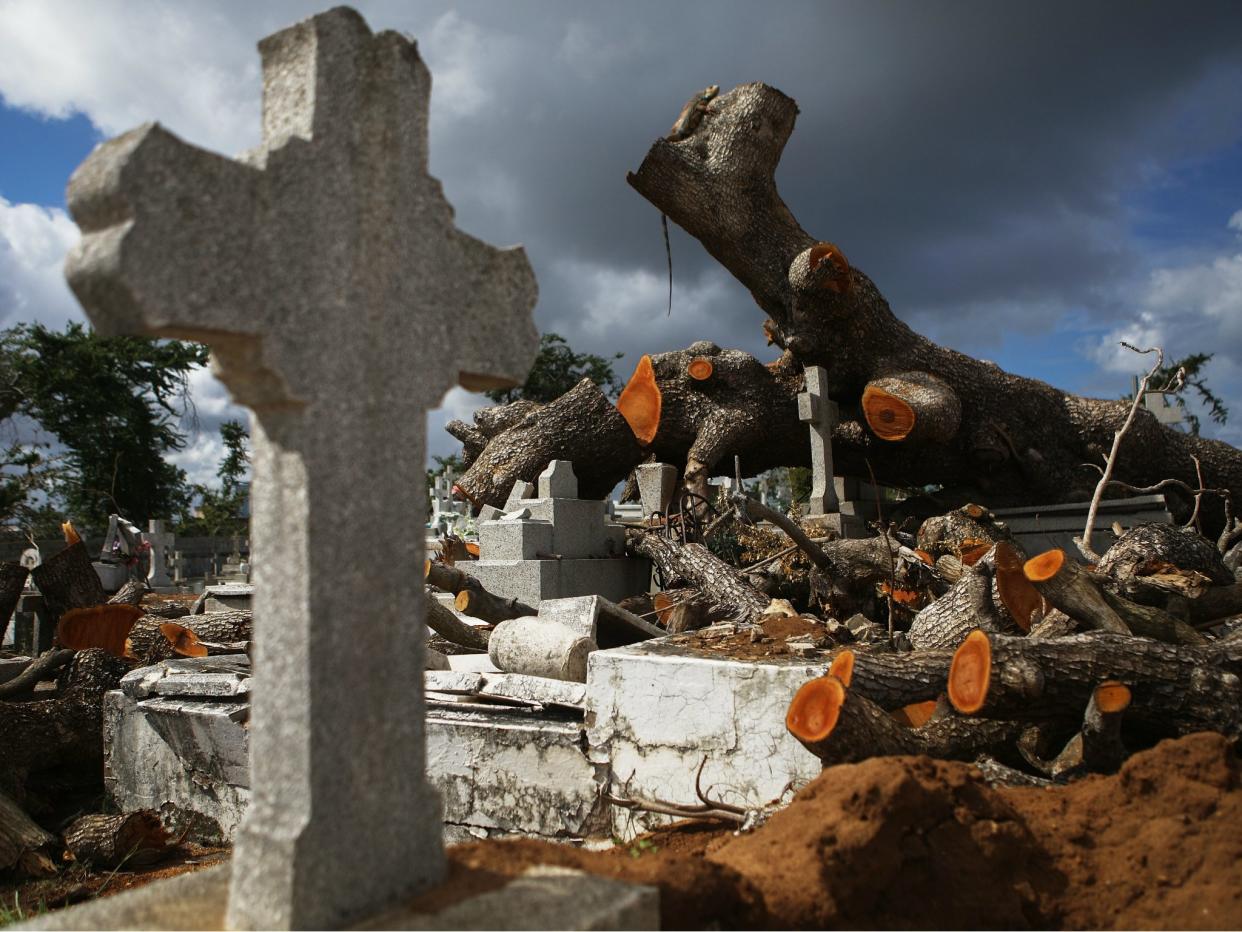Thousands died in Puerto Rico because of Hurricane Maria, new Harvard study says

More than 4,600 people are believed to have died in Puerto Rico from the catastrophic Hurricane Maria according to a new study – far in excess of the official government death toll which stands at 64.
The latest estimate of the number of dead from Harvard’s public health school says that many of the deaths were likely from delayed medical care. The island US territory was largely without electricity and access to basic services for several months after the 2017 hurricane season.
The study, published in the New England Journal of Medicine, called the official death toll of 64 “a substantial underestimate”. The researchers concluded that there were 4,665 “excess deaths” – meaning those people would not likely have died had Puerto Rico not been in such a disastrous state due to the hurricane – between 20 September and 31 December 2017.
Maria, a major hurricane with winds close to 150 miles (241 km) per hour, caused an estimated $90bn in damage to an island already struggling economically, and many residents have subsequently left.
The study noted that its figure is not precise, and that more definite studies are still to be released. But the new estimate, reached using methods that have not previously been applied to the disaster, comes amid widespread concerns that the official death toll was not accurate.
Researchers estimated a 95 per cent likelihood the death toll was in the range of between 800 and 8,500 people. They say about 5,000 is a “likely figure”.
The study did not just count bodies for the death toll. Researchers surveyed nearly 3,300 random households on the island and took into account each of their experiences over a three week period in January 2018.
Respondents were not paid and were asked if a household member had died directly or indirectly as a result of the storm. Missing people were not counted as deaths. Respondents were also asked about deaths within a five minute walking distance of their homes.
The people in those households reported 38 deaths, which was then extrapolated across Puerto Rico’s population of 3.4 million.
Researchers calculated that the island’s mortality rate jumped a whopping 62 per cent in the months following the hurricane.
The official government death toll has long been a matter of controversy, particularly following what critics labelled a slow response to the disaster by the US federal government and President Donald Trump.
The tally of 4,645 dead is more than four times higher than a December estimate by The New York Times, which said the actual death toll was probably about 1,052. A Pennsylvania State University study put the number at 1,085.
The official count is based on how many deaths the medical examiner attributed directly to the category four hurricane, but the study argues that the impact of the aftermath – including the lack of electricity, closed roads due to fallen trees and damaged infrastructure – should be taken into account. There is also the issue that many residents faced in getting access to basic food, water and medical supplies.
“Hurricane Maria caused massive infrastructural damage to Puerto Rico... In our survey, interruption of medical care was the primary cause of sustained high mortality rates in the months following the hurricane,” the study noted. The survey also found that approximately one-third of the total deaths in the months following Maria were caused by delayed or interrupted health care.
Caroline Buckee, a lead author of the new study and epidemiologist at Harvard, told NPR: “Our approach... provides a different kind of estimate and a different kind of insight into the impact of the hurricane.” She added that the government could take on the same methods to do an even larger survey and get more accurate results.
Researchers said that one of the reasons the number of those killed given in the study is an estimate is because deaths may have continued well into 2018. However, getting closer to a likely death toll is important in that it may help dictate future disaster relief operations, and affect disaster funding and aid infrastructure planning in the recovery process. It also helps survivors with closure.
The researchers said that in the aftermath of Maria households went, on average, 68 days without water, 84 days without electricity and 41 days without mobile phone coverage. In the most remote areas, 83 per cent of households were still without power by 31 December.
The government of Puerto Rico has also commissioned a similar study from George Washington University’s school of public health, and the results are due later this year.
Puerto Rico’s government released a statement on Tuesday welcoming the study and saying it would analyse it further.
“As the world knows, the magnitude of this tragic disaster caused by Hurricane Maria resulted in many fatalities. We have always expected the number to be higher than what was previously reported,” Carlos Mercader, executive director of the Puerto Rico Federal Affairs Administration said in the government statement.

 Yahoo News
Yahoo News 
